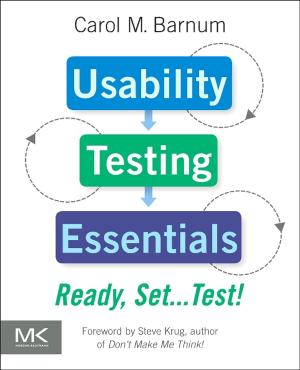Seven Deadliest USB Attacks
Nonfiction, Computers, Networking & Communications, Computer Security, Operating Systems, Application Software| Author: | Brian Anderson, Barbara Anderson | ISBN: | 9781597495547 |
| Publisher: | Elsevier Science | Publication: | June 3, 2010 |
| Imprint: | Syngress | Language: | English |
| Author: | Brian Anderson, Barbara Anderson |
| ISBN: | 9781597495547 |
| Publisher: | Elsevier Science |
| Publication: | June 3, 2010 |
| Imprint: | Syngress |
| Language: | English |
Seven Deadliest USB Attacks provides a comprehensive view of the most serious types of Universal Serial Bus (USB) attacks. While the book focuses on Windows systems, Mac, Linux, and UNIX systems are equally susceptible to similar attacks. If you need to keep up with the latest hacks, attacks, and exploits effecting USB technology, then this book is for you. This book pinpoints the most dangerous hacks and exploits specific to USB, laying out the anatomy of these attacks including how to make your system more secure. You will discover the best ways to defend against these vicious hacks with step-by-step instruction and learn techniques to make your computer and network impenetrable. The attacks outlined in this book are intended for individuals with moderate Microsoft Windows proficiency.
The book provides the tools, tricks, and detailed instructions necessary to reconstruct and mitigate these activities while peering into the risks and future aspects surrounding the respective technologies. There are seven chapters that cover the following: USB Hacksaw; the USB Switchblade; viruses and malicious codes; USB-based heap overflow; the evolution of forensics in computer security; pod slurping; and the human element of security, including the risks, rewards, and controversy surrounding social-engineering engagements.
This book was written to target a vast audience including students, technical staff, business leaders, or anyone seeking to understand fully the removable-media risk for Windows systems. It will be a valuable resource for information security professionals of all levels, as well as web application developers and recreational hackers.
- Knowledge is power, find out about the most dominant attacks currently waging war on computers and networks globally
- Discover the best ways to defend against these vicious attacks; step-by-step instruction shows you how
- Institute countermeasures, don’t be caught defenseless again, and learn techniques to make your computer and network impenetrable
Seven Deadliest USB Attacks provides a comprehensive view of the most serious types of Universal Serial Bus (USB) attacks. While the book focuses on Windows systems, Mac, Linux, and UNIX systems are equally susceptible to similar attacks. If you need to keep up with the latest hacks, attacks, and exploits effecting USB technology, then this book is for you. This book pinpoints the most dangerous hacks and exploits specific to USB, laying out the anatomy of these attacks including how to make your system more secure. You will discover the best ways to defend against these vicious hacks with step-by-step instruction and learn techniques to make your computer and network impenetrable. The attacks outlined in this book are intended for individuals with moderate Microsoft Windows proficiency.
The book provides the tools, tricks, and detailed instructions necessary to reconstruct and mitigate these activities while peering into the risks and future aspects surrounding the respective technologies. There are seven chapters that cover the following: USB Hacksaw; the USB Switchblade; viruses and malicious codes; USB-based heap overflow; the evolution of forensics in computer security; pod slurping; and the human element of security, including the risks, rewards, and controversy surrounding social-engineering engagements.
This book was written to target a vast audience including students, technical staff, business leaders, or anyone seeking to understand fully the removable-media risk for Windows systems. It will be a valuable resource for information security professionals of all levels, as well as web application developers and recreational hackers.
- Knowledge is power, find out about the most dominant attacks currently waging war on computers and networks globally
- Discover the best ways to defend against these vicious attacks; step-by-step instruction shows you how
- Institute countermeasures, don’t be caught defenseless again, and learn techniques to make your computer and network impenetrable















